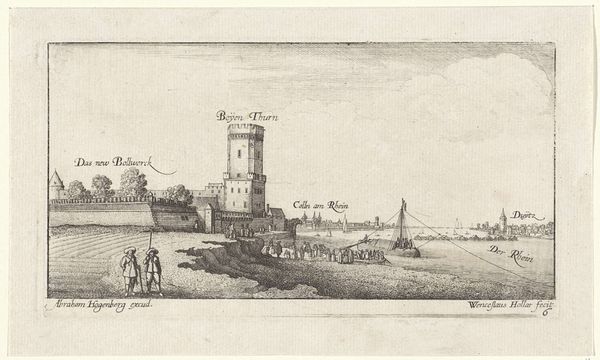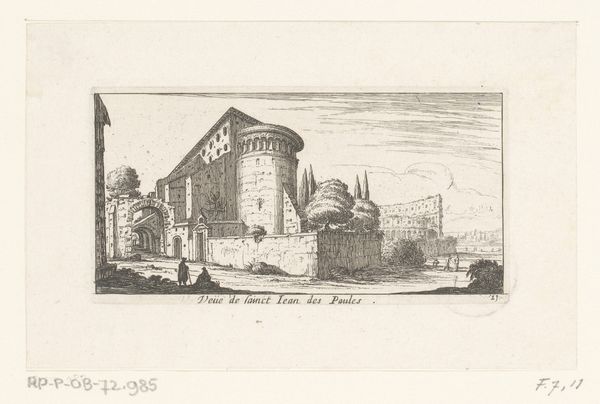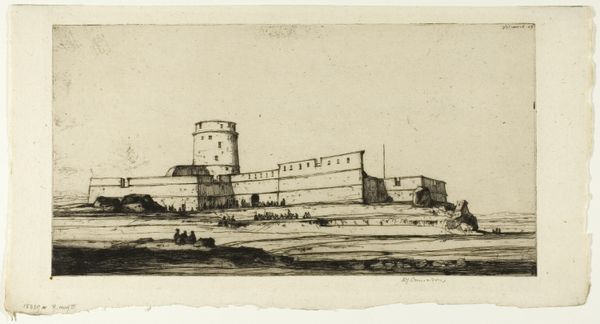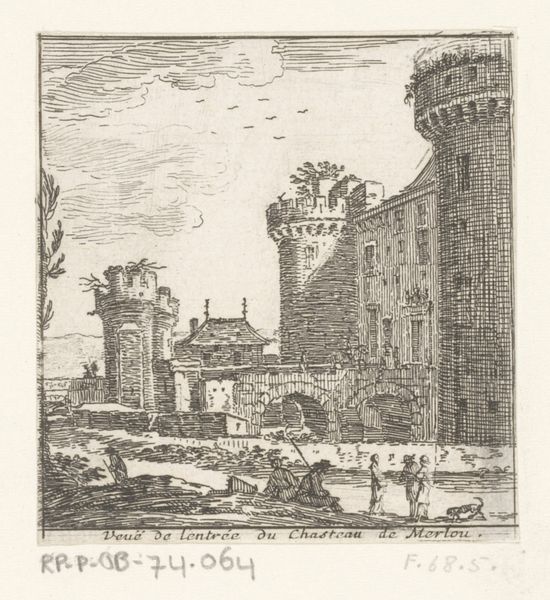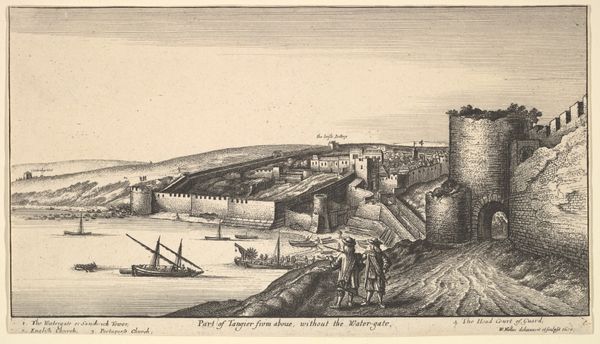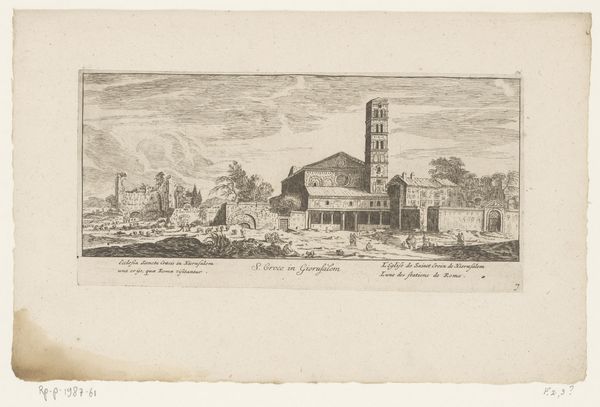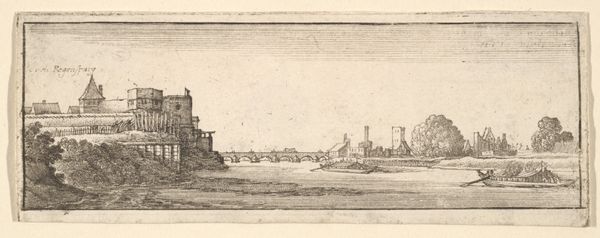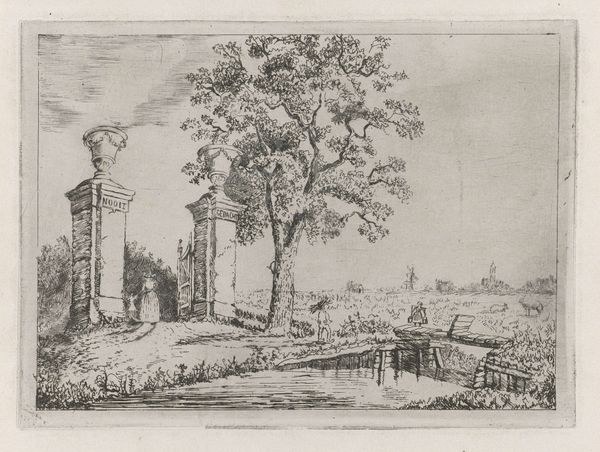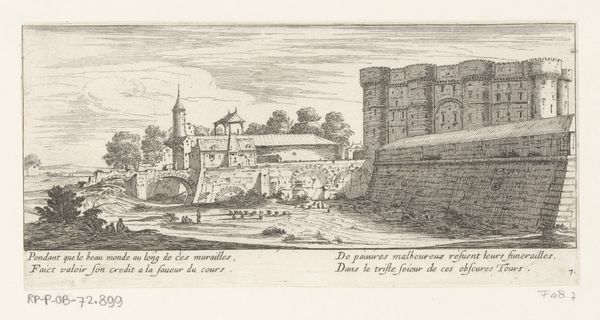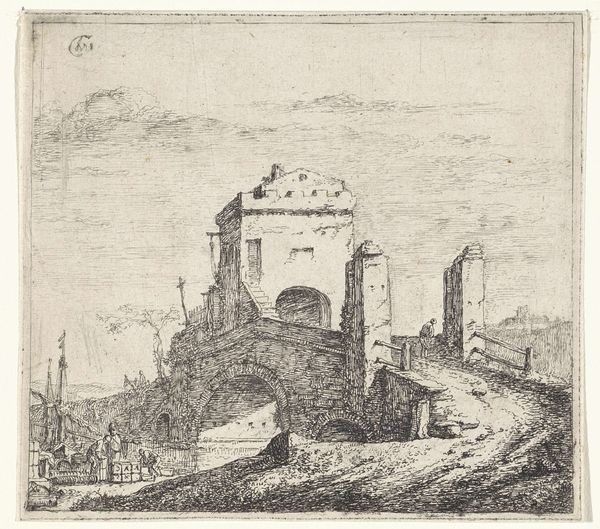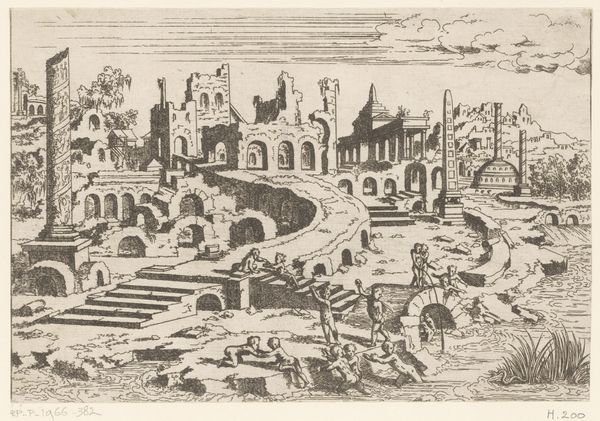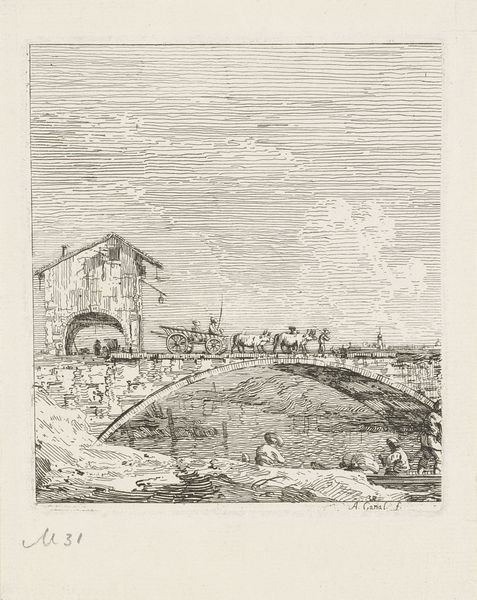
print, etching, engraving
#
baroque
# print
#
etching
#
landscape
#
cityscape
#
engraving
Dimensions: height 86 mm, width 166 mm
Copyright: Rijks Museum: Open Domain
Editor: We're looking at "View of the Tower of the Provost's House and the Louvre," an etching by Israel Silvestre, created in 1652. It’s a very detailed cityscape. I’m struck by how much it focuses on the architecture and urban development more than nature. How do you interpret the scene depicted? Curator: It’s fascinating how Silvestre’s prints document Paris undergoing significant transformation. From a historical perspective, this image captures not just a scene, but also the aspirations of power in the 17th century. The Louvre, then undergoing expansions, was central to royal propaganda. What statement does situating the “new” tower against the Louvre communicate to the public? Editor: Maybe the image is meant to show modernization, or progress during the era? I didn’t consider the intention behind the depiction, so that's an interesting thought. Curator: Exactly. Consider also the context of printmaking as a medium: multiple, relatively affordable copies circulate images to a broad public, thus standardizing, controlling the narratives about royal progress. It served to promote visual identity and culture through controlled avenues of distribution. It really gives one pause about our access to information today too. Editor: I see. So, the artwork’s purpose was less about individual expression, and more about projecting a certain image for political consumption? Curator: Precisely. Art in the service of power, shaping perception. Notice the clean lines, almost diagrammatic. Silvestre worked on many commissions that served a political purpose. Knowing this context reframes what seems like a straightforward cityscape. What else have you noticed in this print? Editor: Now that you mention it, I notice it is less focused on everyday life in the city and focuses primarily on structures like towers. It is almost like a blueprint! Curator: Yes! It reveals that buildings and artwork can say a lot about history. Editor: It certainly puts a different lens on the art. Thanks for sharing the background.
Comments
No comments
Be the first to comment and join the conversation on the ultimate creative platform.
